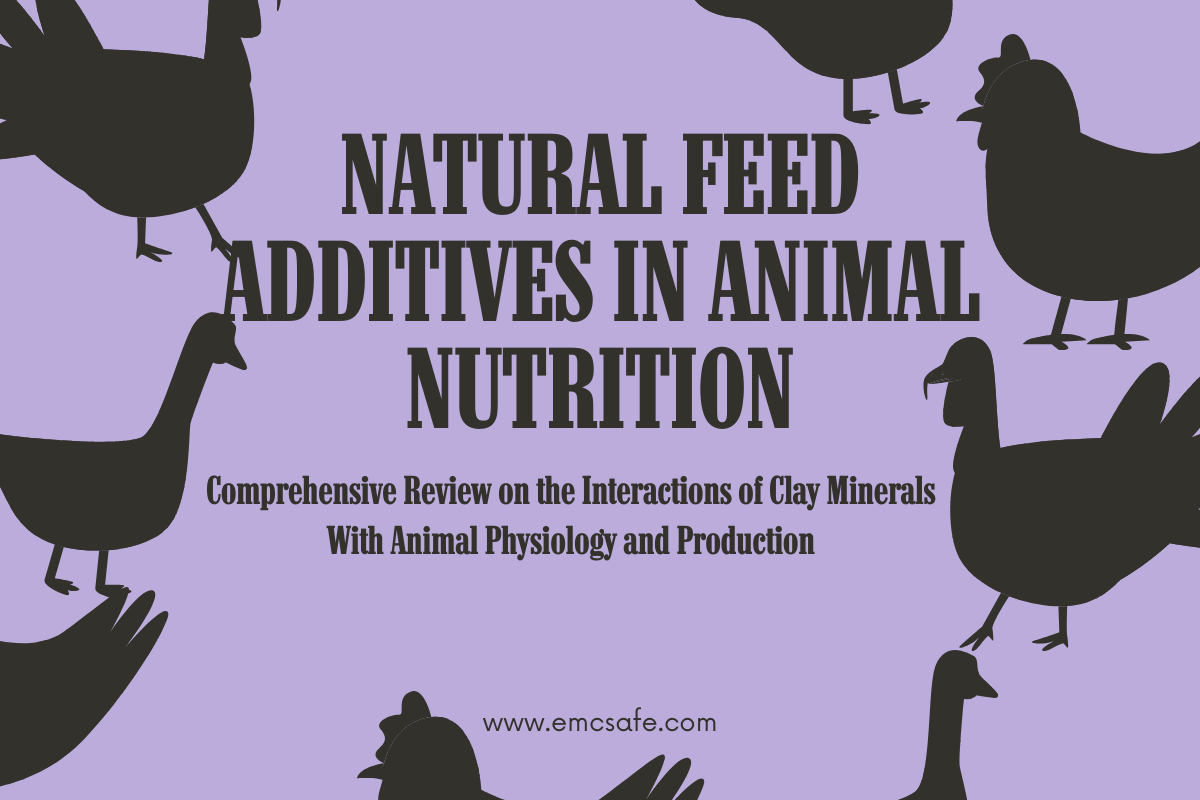Natural Feed Additives in Animal Nutrition

This article is part of the Research Topic Natural Feed Additives in Animal Nutrition – Their Potential as Functional Feed View all 22 articles
Comprehensive Review on the Interactions of Clay Minerals With Animal Physiology and Production
▎Comprehensive Review on the Interactions of Clay Minerals With Animal Physiology and Production
Main Idea:
The article explores the multifaceted roles of clay minerals, particularly bentonite, and zeolites, in animal nutrition, physiology, and production. It highlights their benefits in improving feed quality, detoxifying harmful substances, enhancing gut health, and ultimately contributing to better animal performance. The review also addresses potential risks and future research directions.
▎1. Introduction to Clay Minerals
Clay minerals, specifically bentonite, and zeolites, have garnered attention in animal nutrition due to their unique properties. Bentonite, primarily composed of montmorillonite, exhibits high water absorption and cation exchange capacity (CEC), making it effective in binding nutrients and toxins. Zeolites, particularly clinoptilolite, are recognized for their ability to improve animal health and production efficiency.
▎2. Properties of Clay Minerals
2.1 Bentonite:
Bentonite is characterized by its swelling properties when hydrated, which enhances its ability to adsorb various substances. Its high CEC allows it to interact with cations, facilitating nutrient retention and detoxification.
2.2 Zeolites:
Zeolites possess a porous structure that enables them to trap ions and molecules. Clinoptilolite is the most studied zeolite in animal nutrition due to its efficacy in adsorbing ammonia and other harmful compounds.
▎3. Applications in Animal Feed
Clay minerals are used in animal feeds for several purposes:
3.1 Binders:
Bentonite acts as a binder in pelleted feeds, improving physical properties such as texture and moisture retention. This enhances feed handling and consumption rates.
3.2 Detoxification Agents:
Clay minerals can effectively bind mycotoxins, heavy metals, and other contaminants in feed. By adsorbing these harmful substances, they reduce their bioavailability and mitigate health risks associated with their consumption.
3.3 Nutrient Retention:
The ability of clay minerals to retain nutrients can lead to improved feed efficiency. Their interaction with cations helps maintain a balanced nutrient profile in the digestive tract.
▎4. Impact on Gut Microbiota
The influence of clay minerals on gut microbiota is an emerging area of research with significant implications for animal health:
4.1 Modulation of Microbial Populations:
Dietary supplementation with clay minerals can positively affect the composition and activity of gut microorganisms. This modulation may enhance nutrient absorption and immune responses while reducing gastrointestinal diseases.
4.2 Inorganic Carriers for Bioactive Compounds:
Clay minerals can serve as carriers for bioactive compounds with antibacterial properties, allowing for targeted manipulation of gut microbiota.
▎5. Effects on Animal Health and Performance
The use of clay minerals in animal diets has been associated with various health benefits:
5.1 Improved Growth Rates:
Studies have shown that animals supplemented with clay minerals often exhibit enhanced growth rates due to better nutrient utilization and reduced incidences of disease.
5.2 Enhanced Immune Function:
Clay minerals may contribute to improved immune responses by fostering a healthier gut environment and reducing the load of harmful pathogens.
5.3 Milk Production in Dairy Cows:
In dairy cows, clay mineral supplementation has been linked to increased milk production and improved milk quality, although some studies report mixed results regarding milk composition.
▎6. Potential Risks and Considerations
While the benefits of clay minerals are substantial, potential risks must be acknowledged:
6.1 Mineral Imbalances:
Excessive intake of clay minerals can lead to mineral imbalances, affecting the bioavailability of essential nutrients such as calcium, phosphorus, and trace minerals.
6.2 Interactions with Veterinary Drugs:
There are concerns about the interactions between clay minerals and veterinary medications, which may diminish drug efficacy.
6.3 Intestinal Toxicity:
High levels of clay consumption could result in adverse effects such as intestinal toxicity or liver damage, necessitating careful dosage considerations.
▎7. Future Perspectives
The future use of clay minerals in animal production is promising:
7.1 Advancements in Nanotechnology:
Nanotechnology research may enhance the effectiveness and bioavailability of clay minerals in feed formulations, optimizing their benefits for animal health.
7.2 Synergistic Effects with Other Additives:
Exploring the synergistic effects of combining clay minerals with probiotics or prebiotics could lead to enhanced gut health and improved overall animal performance.
7.3 Continued Research Needs:
Ongoing research is crucial to understanding the complex interactions between clay minerals, animal physiology, and gut microbiota. This knowledge will help maximize the benefits while minimizing potential risks associated with their use.
▎8. Conclusion
Clay minerals represent a valuable tool in modern animal nutrition strategies due to their multifunctional properties. Their ability to detoxify feed, enhance gut health, and improve animal performance positions them as essential components in livestock diets. However, careful consideration of potential risks is necessary to ensure optimal outcomes in animal production practices.


